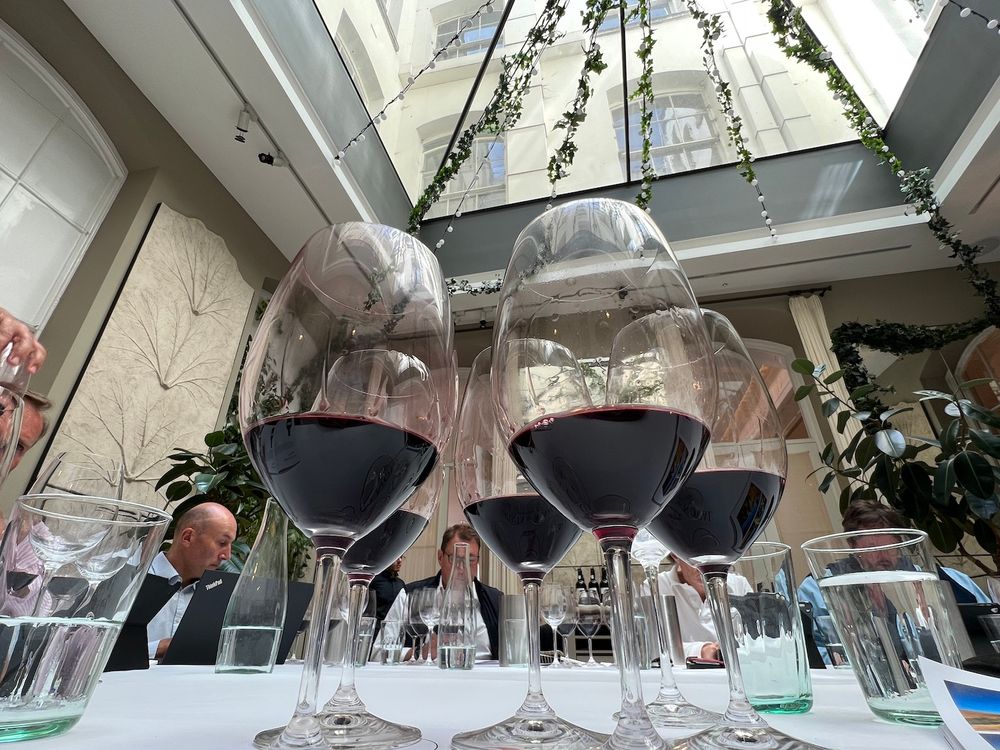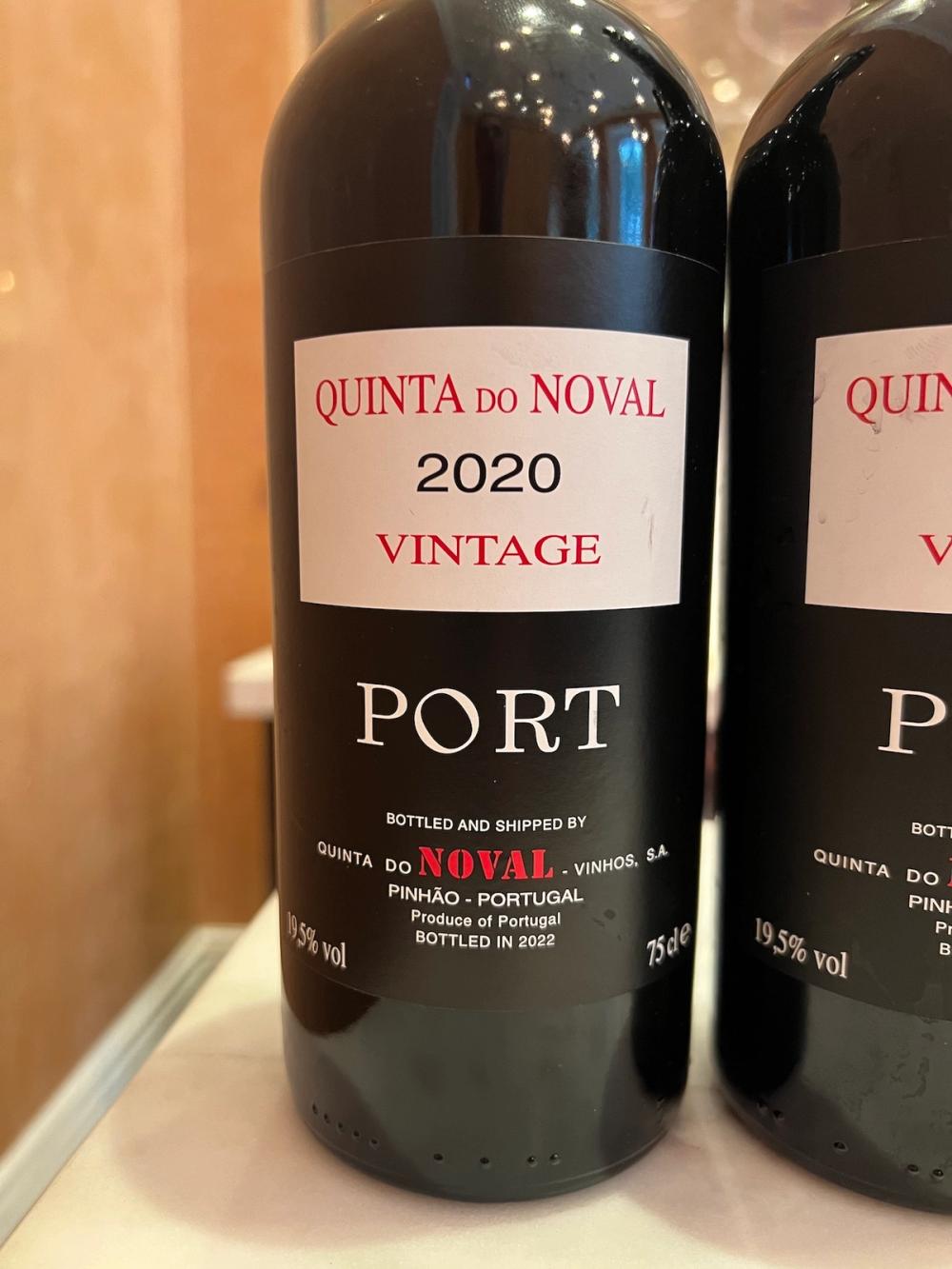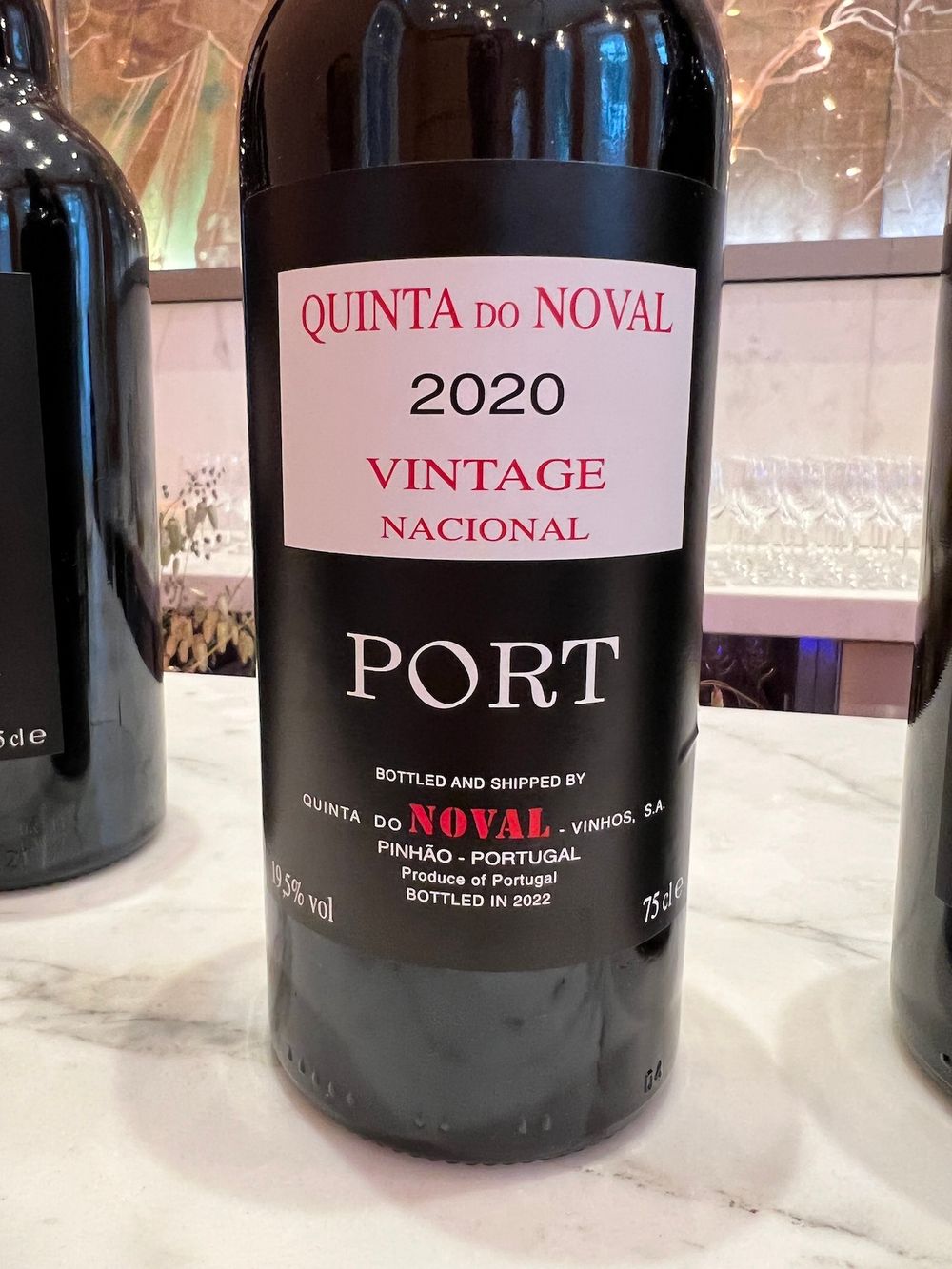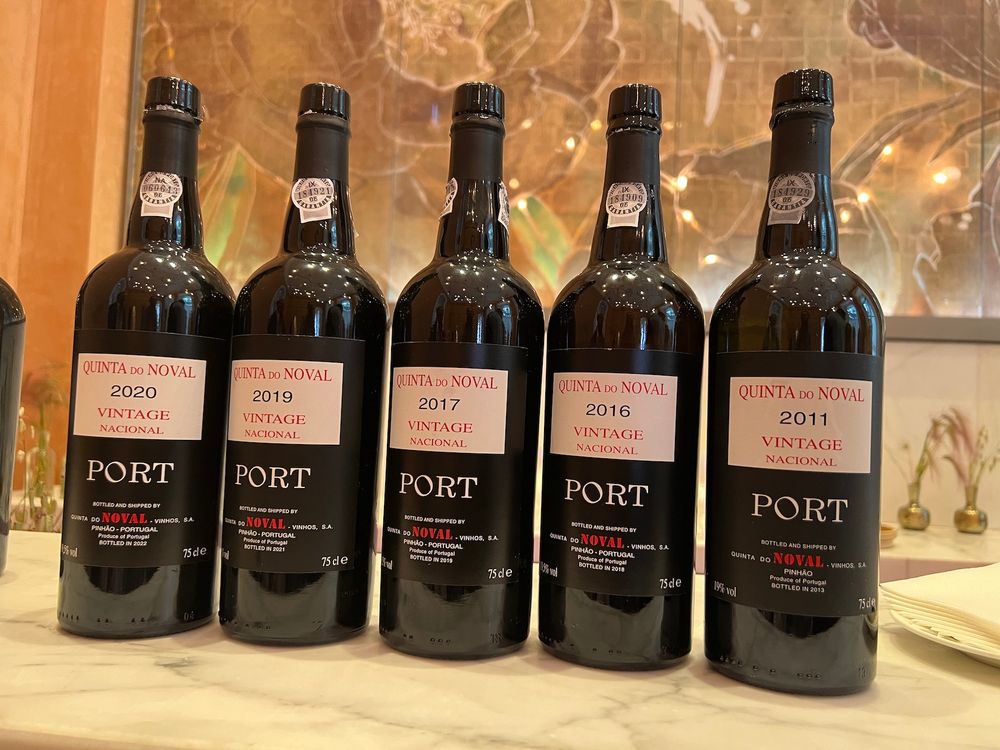“The concentration in the mouth is quite brilliant, wonderfully intense, unctuous, generous, complex like liquified fruit cake made only with wild fruit, prunes and earth,” writes Dean about the Quinta do Noval Nacional 2020.
Much has been made of the beauty of the Douro Valley. All justified, of course, hence its place on UNESCO’s World Heritage listing.
The terraces hold the vines to the sun for best effect, and look as if they have been built by a cartographer rather than a vintner, so perfectly do they match the contours of the steep elevation. When you are there, it is impossible to keep your eyes from staring at the sheer, majestic beauty that is all around you.
It’s one of those places where you wonder if the locals ever get tired of the view.
The steep valley of the Douro and its tributaries also means that the elevation range within the single vineyards is 300 metres giving great quality and flexibility to the winemaker. The aspects vary too as do the varieties of schist rock.
“I know it’s like Innuit talking about different types of snow,” smiles Christian Seely, managing director of Quinta do Noval, as he shows the estate’s new releases to the British press: a Quinta do Noval 2020, a Nacional 2020, a 2021 vinho branco and a 2009 Colheita (the last one released being the 2007).

Quinta do Noval
All of the vineyards at Quinta do Noval are A category and all of the wines that are made here – from the table wines through to the top end ports – are made from grapes grown by the estate, the top ports were all made from grapes actually grown at the quinta until the 2018 purchase of Quinta do Passadouro whose grapes are blended into the Quinta do Noval and will have its bespoke releases in time.
Not only are the vineyards with their broad, white-washed terraces with walls of schistous stone so unique and majestic in layout but they are also studded by orange, olive, almond and cork trees, the latter with vivid red new bark after a recent harvest. Olives are no add-on here with up to 7,000 litres of olive oil produced each year, a bottle of which is generously given out after lunch.
There are some 181 hectares under vine at Quinta do Noval with a 1.6 hectare plot that produces the estate’s iconic Nacional Port of which just 200-250 cases are made in a declared vintage.
All of these vines are ungrafted, pre-phylloxera, and the port it produces is in many eyes the world’s very finest.
So prized is Nacional that in 2011 the bottles were sold singly and not in cases.
This port also follows its own timetable – sometimes a vintage is declared when a vintage is not declared in the rest of the estate and vice versa. In its 12 wines of the Twentieth Century, Wine Spectator listed the 1931 Nacional as one of the dozen, the only fortified wine to be recognised as such.
Ironically the 1931 vintage was one of the occasions that helped Quinta do Noval make its name as a port house. It was a year when no other port houses declared it as a vintage and yet it has gone on to become recognised as one of the greatest ever.
Innovation and diversification

Reaching for the heavens: a vertical of Quinta do Noval Nacional
Quinta do Noval has always stood out from the crowd and been rightly proud of the range of innovations it has been responsible for, from the style of terracing introduced at the end of the Nineteenth Century through to more recent developments at the estate and in the products themselves.
Quinta do Noval was the first port house to create a Late Bottled Vintage Port and the first to introduce blended tawnies with an indication of average age. It became the first house to age, blend and store all its port at its quinta in the Douro. More recently it launched Black, an accessible, young port aimed at a younger demographic and mixologists, in particular.
The quinta has only been sold twice, most recently in 1993 to AXA Millésimes, whose managing director Christian Seely then undertook a series of sweeping changes, initiating a 13-year programme of major renovation replanting 60% of the vineyards with premium vines and moving all of the storage, bottling line and warehouse to the Douro Valley from Gaia. In 2004 the winery released its first still table wines.
It is possibly the estate’s single greatest attribute that everything revolves around the estate itself – the company is named after its vineyard, everything happens at the estate, its top two vintage ports are single-vineyard wines and the whole winemaking process is geared towards strict, precise production.
Tasting the new ports

Quinta do Noval vintage 2020
2020 will not only be remembered as the year of Covid but also a hot dry vintage in the Douro, with an early, short harvest producing wines of immense power and richness. 18 months in oak barrel followed the traditional foot-treading in lagares. Fruit from three different lots from the Pinhão valley and one from the Roncão valley were used, this being a blend of Touriga Nacional, Touriga Francesca, Tinto Cão, Sousão and Tinta Roriz. Winemaker Carlos Agrellos made the decision to increase the residual sugar to 113g/dm (2016 was 82g) increasing its richness and generosity.
Shocking vivid purple in the glass, staining it like Gentian Violet, massive ‘legs’, the freshness leaps out of the glass with intensely concentrated sweet black fruit, black flowers and a hint of boot polish; with time more detail emerges – iodine, violets, summer pudding. In the mouth the wine is disarmingly fresh, ripe black berries, red and blue plum, hints of dry biscuit and milk chocolate; the tannins are immense, powdery fine and ripe with no jagged edges; the finish is chalky dry. Wonderfully rich and intense with explosive power.
Alcohol: 19,5%
Residual sugar: 115g/dm³
Total acidity: 5.30/dm³
pH: 3.68

Quinta do Noval Nacional 2020
Like the Quinta do Noval vintage, this field blend from the ancient two-hectare plot behind the main property also endured a hot dry season with an early short harvest, and also had a higher than normal residual sugar.
Rich and powerful, this has more layers and detail than the Quinta do Noval vintage 2020 at this early stage in its long life, a greater untamed wildness too. Beautifully aromatic, floral, black fruit with diverse impressions over time – iodine, licorice, putty and freshly-baked madeleine perhaps. The concentration in the mouth is quite brilliant, wonderfully intense, unctuous, generous, complex like liquified fruit cake made only with wild fruit, prunes and earth. Stunning, fresh and quite wild.
Alcohol:19,5%
Residual sugar: 113g/dm³
Total acidity: 5.30g/dm³
pH: 3.66
Some general observations from Seely

The new ports were tasted alongside two exceptional vertical flights Quinta do Noval Nacional 2011, 2016, 2017 and 2019; and nine other releases of Quinta do Noval vintage 2011-2020.
“It would have taken 34 years to have declared 10 vintages of port in the past but we have released one every year since 2011,” says Seely, “It has not been my intention to do this but I have sort of ‘liberated myself from this constraint’.”
He explains that this is not a commercial decision (some vintages are miniscule in quantity) but rather a reflection of the increased quality of the fruit that the quinta has been producing since 1994 – Seely’s first vintage.
“There has been a marked difference in the precision of the fruit coming into the winery there used to be rough edges on the tannin. Young 94s and 95s for example are not as ‘pure’ as the young wines now. There is more precision now.”
“Basically if it’s lovely then we bottle it.”

Christian Seely, managing director, Spring restaurant, London, 2022
This is not the case with Nacional which has had five releases since, and including, 2011.
“Some vintages with Nacional it might be one that we do not release for example the 2015 which we have not put out to market. Sometimes they can be so powerful, with so much tannic power they close in on themselves – 2015 was like that – very small berries. So we may well put it out in two years’ time,” he adds.
“It’s a wine with 100 years of life,” Seely says, “we put half on the market when we declare and the other half we store and the quantities vary enormously 250-260 cases tops. In 2020 there are 160 cases.”
As for manipulating the wine’s spirit and residual sugar Seely explains:
“We use a very good spirit but we don’t believe (unlike some) that the quality is a major contributor. We go for purity and neutrality we don’t want it to bring anything. After all we want to express the terroir of Quinta do Noval and we are not looking for the spirit to add anything.”
“As for the residual sugar, we make a decision on this, for example in 2020 we decided that the vintage would suit a rich style so there is a bit more residual sugar in there – basically we decide whether it will work better as a drier style or sweeter style.”










































